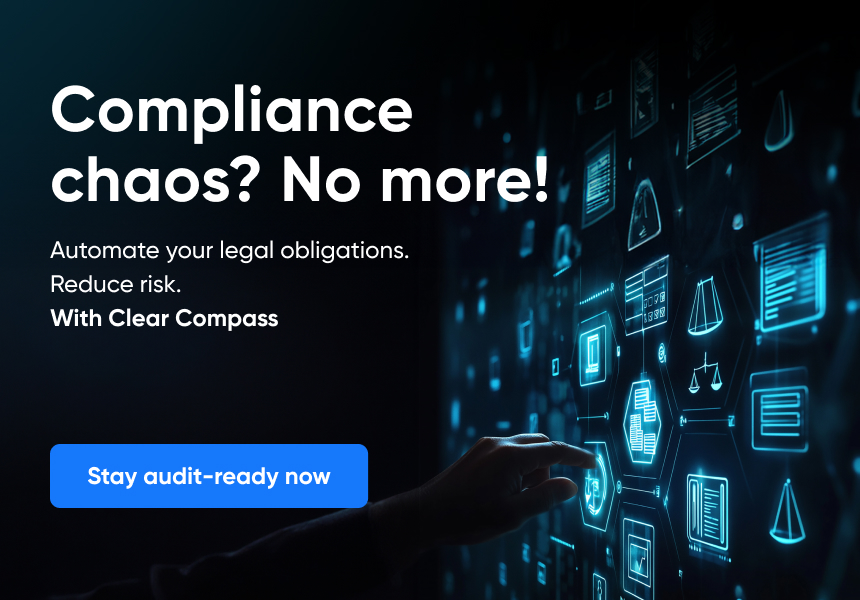The CFO's Role in GRC: From Operational Ownership to Strategic Leader
Today's business world is anything but simple. Regulatory demands are growing, markets are unpredictable, and investor expectations are higher than ever. In this complex environment, Governance, Risk, and Compliance (GRC) has moved from being a back-office responsibility to a strategic priority.
GRC isn't about ticking boxes anymore; it's about creating a culture of accountability, resilience, and trust. Done right, it can drive better decisions and long-term value.
And right at the centre of this transformation? The CFO.
No longer just the custodian of numbers, the modern CFO is becoming a champion of responsible growth by integrating GRC into strategy, culture, and decision-making.
Understanding GRC: Governance, Risk & Compliance and how the CFO can turn it into a Competitive Advantage.
Governance
At its heart, governance is about how decisions are made. The systems, principles, and processes ensure transparency, ethical behaviour, and alignment with company rules. The CFO plays a key role in designing financial governance structures that support control and agility, showcasing the CFO's responsibility in Governance.
Risk Management
Risk isn't something to fear; it's something to understand. A CFO's visibility into financial data, market trends, and operational performance uniquely positions them to spot early warning signs and drive structured, enterprise-wide risk response.
Compliance
Compliance is the bedrock of integrity, from tax laws and financial reporting to data privacy and ESG disclosures. The CFO ensures that compliance isn't just reactive, but proactive and built into daily workflows, demonstrating compliance oversight.
GRC: From Control to Value Creation
Gone are the days when GRC lived only in audits or year-end reviews. For CFOs today, a strong GRC framework means:
- Fewer surprises
- Faster, more confident decisions
- Better use of capital and resources
It reduces firefighting and fosters a mindset of continuous compliance. With smarter data, streamlined processes, and more transparent accountability, the CFO can confidently steer the business, even in uncertain times.
What's more, a strong GRC builds trust among all stakeholders, which is vital for raising funds, expanding into new markets, or forming partnerships.
Key Responsibilities of the CFO in GRC
1. Champion strong governance
Shape a decision-making environment rooted in ethics, transparency, and clear internal controls. Ensure that every financial strategy is backed by good governance.
2. Lead enterprise risk management
Use financial foresight to assess risk holistically, from market volatility and credit risks to operational breakdowns and build balanced, fact-based responses.
3. Anchor regulatory compliance
Set up smart processes, audit-ready systems, and future-proof teams to keep the organisation ahead of regulatory changes.
4. Infuse GRC into strategy
Whether it's M&A, global expansion, or tech investments, layer in a GRC lens early, so growth moves are bold, but not blind.
5. Break silos, build alignment
GRC covers finance, legal, IT, HR , and operations. The CFO can drive unified actions with shared tools, clear accountability, and cross-functional KPIs.
6. Set the cultural tone
The CFO leads by example regarding ethical conduct and policy adherence. GRC should be integrated into everyday activities, not just compliance season.
The Traditional CFO: Gatekeeper of Financial Control
Traditionally, CFOs focused on reporting accuracy, cost control, and operational efficiency. Risk was handled in silos. Compliance came up during audits. Governance was more checklists than culture.
The Modern CFO: Strategic Enabler of GRC
Today's CFO is different.
They are now a co-pilot in business transformation. GRC isn't a side job- it's built into every strategic decision. Modern CFOs:
- Use risk and compliance data to fuel innovation
- Anticipate issues rather than react
- Drive tech adoption for smarter compliance
- Champion cross-team collaboration
They know that smart risk-taking leads to stronger outcomes when backed by strong governance. With smarter data, streamlined processes, and clearer accountability, the risk and compliance strategy can confidently steer the business, even in uncertain times.
Challenges CFOs Face in GRC Leadership and How to Handle Them
1. Keeping up with Changing Regulations
Challenge: Constantly changing laws and requirements.
Solution: Use compliance dashboards, maintain a live library of obligations, and adopt tools that adapt to multi-jurisdictional rules and ever-changing laws.
2. Breaking Silos
Challenge: GRC needs collaboration, but teams often work in silos.
Solution: Set up shared systems, hold joint reviews, and define clear, responsible, accountable, consulted, and informed models.
3. Managing GRC Technology
Challenge: Not all tech simplifies; some complicate processes.
Solution: Choose tools with integrations (ERP, HRMS), use prebuilt templates, and ensure real-time dashboards for CFO-level visibility.
4. Balancing Risk and Growth
Challenge: Growth is Risky. Risk aversion can stall growth.
Solution: Set risk thresholds, link GRC metrics to business KPIs, and bring GRC into planning, not just audits.
GRC is no longer the compliance team's problem; it's a leadership mindset.
CFOs are uniquely placed to turn GRC into a strategic asset. By embedding governance, risk and compliance into the organisation's DNA, CFOs do more than safeguard operations; they're powering sustainable confidence growth.
In an uncertain world, it's not just the bold that thrive, it's the bold and well-governed. And today's CFO? They are leading the charge.



